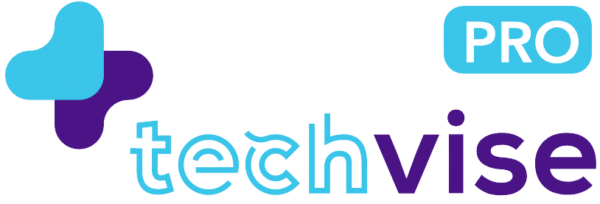In the modern-day world, fraud is a serious threat that can lead to large financial losses and even damage a business’s reputation. In order to fight this, businesses need to turn to fraud detection automation as a solution.
Fraud can occur anytime, so experiencing it might not be a pleasant thing to face. Knowing how to prevent fraud is always a good sign that you’re prepared for the worst. Especially if you’ve experienced fraud before, you know how bad it might be and how much it can hurt your business reputation.
In this article, we are going to take some time to learn more about fraud detection and prevention methods you can use for keeping your business safe.
Importance of Fraud Detection Automation
Fraud detection automation is a process of using software tools for preventing real-time fraudulent activities. By automating fraud detection, businesses reduce the risk of reputational and financial losses.
Automation helps companies identify fraud patterns in transactions, patterns and for uncovering fraudulent behaviors. This includes analysing suspicious transactions, detecting unauthorized access attempts, and more.
Moreover, fraud detection automation is excellent for allowing businesses to save time and resources. The automation process is all regulated by the fraud detection software. This allows businesses to focus on their operations and systems that’ll prevent fraudulent activities.
Fraud detection automation is an essential tool that businesses use for protecting themselves against fraudulent activities. This way, they leverage technology’s power and allow businesses to promise an adequate level of security for their customers.
How Automated Fraud Detection Works
Automated fraud detection systems use advanced algorithms for analysing large data sets and detecting irregular patterns that show fraudulent activities. Here are some of the steps that are involved in the process:
- Data collection: First step to automating fraud detection and collecting data from numerous sources such as customer, transactional and external data sources.
- Pre-phase processing: The data is cleansed and prepared for analysis.
- Pattern detection: A set of more advanced algorithms are used for detecting suspicious patterns in the pre-phase. These patterns are usually when many transactions are conducted through the same IP address and more.
- Risk scoring: Each transaction and the customer will have a fraud risk score. Higher risk scores will indicate higher probability levels of fraudulent activity.
- Machine learning: The automated system learns from data and improves its fraud detection capabilities when it’s used more.
- Actionable insights: The automated system provides enough actionable insights for the business, such as recommendations and alerts for further investigation.
4 Ways to Identify Fraud

Use Fraud Detection Software
Software designed to identify fraud helps you track and investigate suspicious activity on your website, ensuring enhanced security measures. It’s used for preventing stolen IDs, cards and more. Any type of fraud detection software you use, has the same framework and that is the following:
- To investigate: This allows you to learn more about users based on the type of data you have. This is where data enrichment comes in and gives you a clear picture of the risks associated with the user, and takes the data for showing you the fraud risk score a customer has.
- To block: the software automatically blocks fraudulent activities.
- To monitor fraudulent activities: Fraud detection software allows you to identify data from your users when they are on your domain. For example, their IP address and more.
Before you choose which software is the right fit for you, you need to know more about the key components of a fraud detection software. Here are the main components of a fraud detection software:
- Machine learning (ML) and AI
- Global network data
- A customisable policy engine
- Alert management and engines
- Orchestration hub
These are the key components, but when it comes to choosing which fraud detection software you should use, you need to carefully analyze the following factors:
- The automation level of the software
- Comprehensiveness
- Does the software offer multiple protection layers like authentication, encompassing device ID, analysing session behavior and more
- What kind of integrations does the software offer?
- The security standards of the software
- The costs of the software
- The level of support and customer care
This might be confusing for some to analyze, but take heed of the following examples when choosing a fraud detection software. You need to choose one that gives a green light in the following areas:
- Multiple protection layers and high level of security standards: AML lookups, white-box machine learning, device fingerprinting and checks through more than 50 social media channels and online networks that reveal customers intentions. This is to make sure users are real and not fake IDs, where users are screened through PEP lists, sanction lists and many other watch lists.
- Integration: Software integrations itself and showing how you can customize your risk rules. When it comes to fraud detection software, you need to see what kind of integration it offers and how much it allows you to customize risk rules.
Each is different and you need to see if it gives you a green light on the factors we mentioned above. Therefore, be extra careful when choosing and even make a comparison of different software for fraud prevention and detection if you need to. There are certain software options that could make a significant difference, but it is highly dependable on how you run your business. For example, if you are operating your business remote and online, SEON’s software for fraud detection offers device fingerprinting service which creates a unique ID for every device used in order to detect potentially suspicious devices and activities. This can be really useful for these types of businesses because it reduces the risk of fraud by 99%.
Make Business Decisions Based on Real-Time Data
Real-time data analytics is important for allowing you to prevent and detect fraud, saving your business’s reputation. More importantly, prioritize it above anything else when it comes to your organization’s success. Strong analytics are what prevent your organization from fraudulent activities and hard losses due to them.
CNBC Statistics show that last year, consumers lost around $8.8 billion due to scams. Each year, online attackers are coming up with new ways how they can breach your data, so it’s important to come up with methods to stop them.
The most powerful analytical tools used are:
- Machine learning (ML)
- Natural language processing (NLP)
- Predictive modeling (PM)
- Artificial Intelligence (AI)
Overall, data analysis is helping organizations make much more informed decisions, such as driving innovation and creating the proper strategies for growth. Additionally, they can be used for understanding customer trends, operational efficiencies and market dynamics.
Strengthen Your Internal Controls
You would be surprised, but fraud can occur internally just as much as externally. In fact, 57% of fraud is committed internally, not externally! Internal fraud occurs because of numerous reasons and some of them are linked to issues employees might have with the organization such as:
- Low wages
- Undervalued
- Many arguments and more
Optimizing processes is important for allowing organizations to identify the areas they need for improvement and making their operations more efficient. After all, an organization that focuses on optimizing the process will be a successful one in the future.
Here are some steps you can follow for optimizing your monitoring process:
- Setting up an internal fraud detection system
- Strengthening your internal controls and ensuring that policies are followed
- Segregating duties to ensure you are reducing fraud risk
- Establishing a reporting system
- Conducting periodic audits and reviews from external auditors
- Ensuring all of your financial records are stored securely
Additionally, to make things easier, you can educate your team about fraud on a deeper level as mentioned in several guides across internet, so you ensure the company understands how it’s working. Educate your team, so they can work together with the AI and identify fraud as fast as possible. Delegating tasks to the right people is always a good idea, even if you use the best fraud detection software, you still need people to be at the top of your game.
Revisit Profiles Regularly
There are plenty of users who might sign up on your page, but aren’t active anymore. Common fraudulent behavior is detected when a profile might not be used in the past six months, so it’s important to re-check it over time.
Re-examine your fraud profiles and check up on the risks that rise over time. Remember, online attackers are always coming up with new ideas and methods to hit you, so keep an eye out for inactive profiles.
Common Types of Fraud You’ll Encounter
There are different types of fraud, but the most common ones include the following:
- Credit card fraud: 65% of people have experienced credit card fraud at least one time in their life. Online attackers will use credit card fraud to buy products and services illegally.
- Account takeovers: This is when online attackers use inactive accounts and steal credentials, or steal these IDs for making a new fake account.
- Friendly fraud: When an online attacker will claim that they ‘mistakenly’ made a purchase and claim a false chargeback request.
- Return fraud: Online attackers will purchase items on your site and try to take advantage of your return policy for getting free items, purposely trying to reduce your inventory.
- Affiliate fraud: If there’s bad traffic on your site, it might be because of online attackers. This is most common in the iGaming industry, where affiliate fraudsters will usually target PPL and PPC acquisition models.
Summing Up
As we mentioned before, online fraud is on the rise. Detecting fraud is increasingly challenging for organizations due to the constant emergence of new tactics employed by fraudsters. To combat this, it is crucial to consistently update your anti-fraud tools and provide ongoing education to your internal team about the risks associated with online fraud.
By staying vigilant and proactive, you can mitigate the impact of fraudulent activities on your business.

